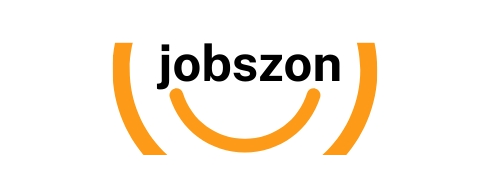Job Boards Can Help Your Search if Used Strategically
If you’re in a career transition or you’re looking for a new job, job boards can be a helpful tool is you use them correctly. But before we dig into this deeply, we want to stress that that’s probably one of the least effective ways to find a job today. Statistics are showing us that 85% of positions are filled through networking and referral, not by mindlessly sending out your resume by the hundreds to various job boards out there.
So let’s talk about three ways to actually increase your chances of landing in an interview by applying through the job board.
3 Job Boards Tips To Get Interviews
Tip Number 1
Tip number one is to keep plan your job board activity with the applicant tracking systems in mind.
We are using the term applicant tracking system broadly. When you apply for a job on a job board, the chances are really good that it’s going to go automatically into an applicant tracking system (ATS for short) about 90 percent of the time.
We say about 90 percent because we’ve seen anywhere from 92 to 99. However, it is always been in the nineties of the fortune 500 companies that are using applicant tracking systems. But another percentage that is probably much more relevant for individuals that are not applying to those fortune 500 companies is that 35 percent of small to medium size companies are also using them. And that 35%, that number was several years ago. Most likely has increased significantly over the years, because the costs of applicant tracking software has become less and less expensive.
What happens is your resume gets submitted and it just automatically gets uploaded into an applicant tracking system?
The information is parsed from your resume over into various database fields. And it’s the computer, not the live recruiter that matches your resume to the job description. The ATS also gives your resume a ranking, similar to a Yelp review. If you’re in a new town and you want to go out to dinner that night, what are the things that most people do? They bring up Yelp.
They look at the restaurants in the area and they say, well, I’m not going to consider this restaurant here. That’s only two stars. I’m goning go to this four- or five-star restaurant over here.
Incredibly, that’s often what happens with your resume! It’s ranked high or it may be ranked lower. All based solely on what you have in your resume. And somebody’s not looking at the actual resume yet, because of the volume of applications from job boards, they’re looking at the four and the five-star resumes the ATS is ranking for them.
What makes a four- or five-star resume? It’s the keywords it’s matching your resume with from the job description. There is a bit of a science to this and most people just don’t have the knowledge to craft a resume with the right keyword density. Services such as Resume Cheetah can help with this.
So, our first tip for leveraging jobs boards is to make sure that you are customizing your resume for the job you are applying to. Take note of the keywords in the job and adjust your resume accordingly.
Job Boards Tip Number 2
Just as important as making sure your resume has the right keywords in it is the formatting of the resume .
A lot of people like to use one of these custom-made templates often downloaded by Microsoft office. It is a convenient and free resource to use when you are writing your resume and, overall, it looks really pretty to the eye.
These templates give you a column for your skills. There’ll be a little email icon and a little image of a phone for the phone number. And over in another column, the career summary, and it looks really appealing to the eye. But if 95 percent of the time no real human will see it coming from the job board, is this effective? We say NO! Most applicant tracking systems do not play well with resumes that have this kind of complex formatting.
They don’t play well with columns, with inserts, with graphs and with images. Remember, those little icons are images. You have to be really careful about that. And let me just pause for a moment.
Use a very basic format for the jobs you are applying through on job boards. The goal is to get your resume ranked so a live recruiter will look at it and, hopefully, call you for an interview. The keywords are more important for the format. Once you get the call from the recruiter, then you can send them the pretty, formatted resume.
Tip Number 3 For Job Boards
This tip is about social media getting your act together on social media platforms. Understand that there’s a really good chance that once your resume is pulled for one of these online job boards, and it’s selected, one of the first things that they’ll often do go to your LinkedIn profile.
You want make sure that your LinkedIn profile is up to date. Some employers will check your chronological list of jobs on your resume against what you have listed in your social media profile. It it doesn’t match they have been known to see that as being inattentive to details and, at the extreme, an integrity issue. If you’re struggling with LinkedIn go to their site. They have a lot of help for free.
Also, we recommend you delete any posts on social media that could be considered controversial or provocative, including pictures. Twitter, Instagram, Facebook, etc… can all be accessed by potential employers. Your personal life should not have an impact on how well qualified you are for a job. However, candidate are hired much more based on subjective feelings than objective criteria. It may not be fair, but that is how it works!
BONUS Tip Number 4
So many people just don’t even consider this one and yet can be so important.
Job boards bonus tip number 4 is keeping a log of the positions that you’re applying for. What we recommend is that when you’re looking at that job description, do a screenshot of it, create a Google drive folder, or just a folder on your desktop, place that screenshot into the folder and then label that folder with a company’s name.
Also include the date that you applied for that position and maybe have another folder that is labeled “job positions applied for” or “job positions”. Every time you apply for a position, create a folder, put the job description in there, then put it into the other folder. This is important because if you are called for an interview, it’s probably going to be a couple of weeks later and you absolutely want to have that job description handy.
You will want to review that job description very carefully before that phone screen, and definitely very carefully before any kind of interview. This is the only way to make sure you can address what they are looking for as far as you know, and how your skills closely match their needs.
So those are the three tips that we have for you. One be very conscientious that your resume is likely going to go into an tracking system. Two, submit a job board resume that is easy for the ATS systems to use. Three, make sure that you get your social media, and specifically your LinkedIn profile, up to date . Job boards bonus tip number four is to keep a log of the positions that you’re applying for.We hope you found this post informative and useful.
If you haven’t already done, please consider sharing this on your social media sites or forwarding it to a colleague who might also find the information helpful.

